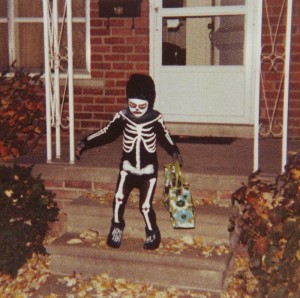
Halloween was a religious festival in medieval and Tudor times, but like many feast days its roots were actually pagan. It came from Samhain, the Celtic new year festival which was celebrated from sunset on 31st October to sunset on 1st November. At Samhain, it was believed that the veil between the world of the living and that of the dead was at its thinnest and that the souls of the dead could walk the earth. These spirits had to be warded off so people would light bonfires and wear masks. When Pope Gregory III chose 1st November as a day to remember and honour the apostles and all the saints and martyrs of the Church in the 9th century, the traditions associated with Samhain became incorporated into this and the evening of 31st October became a night to mark the passage of souls through Purgatory, the place where souls were said to reside between death and the Last Judgement.
On All Hallows Eve, poor people and children would go “souling”, going door-to-door begging for alms and spiced cakes known as soul cakes. Each soul cake was said to represent a soul in Purgatory and in exchange for a cake the souler would promise to pray for the dead of that household. Children would sing a song as they walked from door-to-door, and here is a version which was still being sung in the 19th century:
A soul! a soul! a soul-cake!
Please good Missis, a soul-cake!
An apple, a pear, a plum, or a cherry,
Any good thing to make us all merry.
One for Peter, two for Paul
Three for Him who made us all.
Today’s tradition of children going “trick or treating” comes from the medieval practice of souling, and the tradition of dressing up as witches and monsters comes from the Celtic tradition of wearing masks to frighten off spirits.
American composer and organist Kristen Lawrence recorded a version of the souling song, using a traditional English melody and traditional lyrics, in her collection of “Halloween Carols”. Here it is:
Did you know that Anne Boleyn is one of the most prolific ghosts in England? Click here to read about the places she is said to haunt.